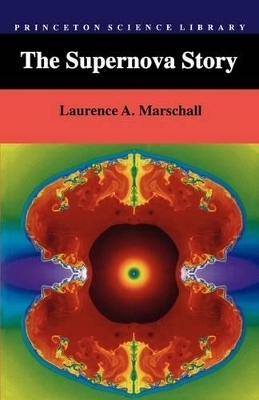
The Supernova Story
Princeton University Press (Verlag)
978-0-691-03633-5 (ISBN)
Astronomers believe that a supernova is a massive explosion signaling the death of a star, causing a cosmic recycling of the chemical elements and leaving behind a pulsar, black hole, or nothing at all. In an engaging story of the life cycles of stars, Laurence Marschall tells how early astronomers identified supernovae, and how later scientists came to their current understanding, piecing together observations and historical accounts to form a theory, which was tested by intensive study of SN 1987A, the brightest supernova since 1006. He has revised and updated The Supernova Story to include all the latest developments concerning SN 1987A, which astronomers still watch for possible aftershocks, as well as SN 1993J, the spectacular new event in the cosmic laboratory.
Laurence A. Marschall is Professor of Physics at Gettysburg College and the editor of CCD Astronomy. He is a contributor to The Sciences, Astronomy, Harper's, The New York Times Book Review, and Air and Space.
Preface (1994)Preface (1988)AcknowledgmentsCh. 1A View from Planet EarthStars and Stories1What Astronomers Do4Lights in the Sky6Taking Stock of the Sky7Ch. 2Messages in StarlightThe Measure of the Stars19The Doppler Shift and the Motions of Stars26The Measure of the Universe30Ch. 3New Stars in Ancient TimesThe Early Records42The Chinese Records45How to Recognize a Supernova50First Millennium Supernovae54The Supernova of 100656The Supernova of 105459The Supernova of 118165A Thousand Years of Watching67Ch. 4Supernovae and the Revolution in ScienceAristotle and the Medieval Cosmos69Tycho and the Nova Stella of 157274The New Star of 160482The New Cosmos86Ch. 5The Long WaitThe Unsteady Stars90A Bright Star in Andromeda94The Recognition of Supernovae97Supernovae Defined101The Search Begins107High Tech Enters the Picture111The Human Eye versus the Eye of the Machine114Still Waiting after All These Years116Ch. 6Why Stars ExplodeSupernovae Observed119The Life of a Star125Over the Brink130Light Curves and Spectra136Type I Supernovae139Growing Distinctions140The State of Present Knowledge142Ch. 7Wisps and TattersSupernova Remnants145The Crab Nebula146The Secret Life of Cassiopeia A155Young Supernova Remnants161Old Supernova Remnants164Ch. 8The Eye of the StormLooking for Phantoms169The Discovery of Pulsars170The Nature of the Beast174Pulsars, Neutron Stars, and Supernova Remnants181From Neutron Stars to Black Holes186A Partial Picture194Ch. 9Seeding the StarsAtoms and the Universe197In the Beginning201Element Formation in Stars203Seeding the Stars206The Journeywork of the Stars212Ch. 10Cosmic DimensionsA Universe of Galaxies217Probing the Depths of Space218Shaping the Galaxies223Primordial Supernovae230Ch. 11A Death in the NeighborhoodA Dot in a Cloud of Light235Which Star Exploded?243Much Ado about Almost Nothing - The Neutrino Burst249Observations and Theories256Clues in the Spectra260The Mystery Spot261What Do We Know So Far?264What's Next?265Ch. 12Into the FutureA New Science269New Ways of Looking271Prospects274Epilogue (1994)277Bibliographical Notes299Glossary303Index311
| Erscheint lt. Verlag | 3.7.1994 |
|---|---|
| Reihe/Serie | Princeton Science Library |
| Zusatzinfo | 74 figs |
| Verlagsort | New Jersey |
| Sprache | englisch |
| Maße | 197 x 254 mm |
| Gewicht | 397 g |
| Themenwelt | Sachbuch/Ratgeber ► Natur / Technik ► Weltraum / Astronomie |
| Naturwissenschaften ► Physik / Astronomie ► Astronomie / Astrophysik | |
| ISBN-10 | 0-691-03633-0 / 0691036330 |
| ISBN-13 | 978-0-691-03633-5 / 9780691036335 |
| Zustand | Neuware |
| Haben Sie eine Frage zum Produkt? |
aus dem Bereich


